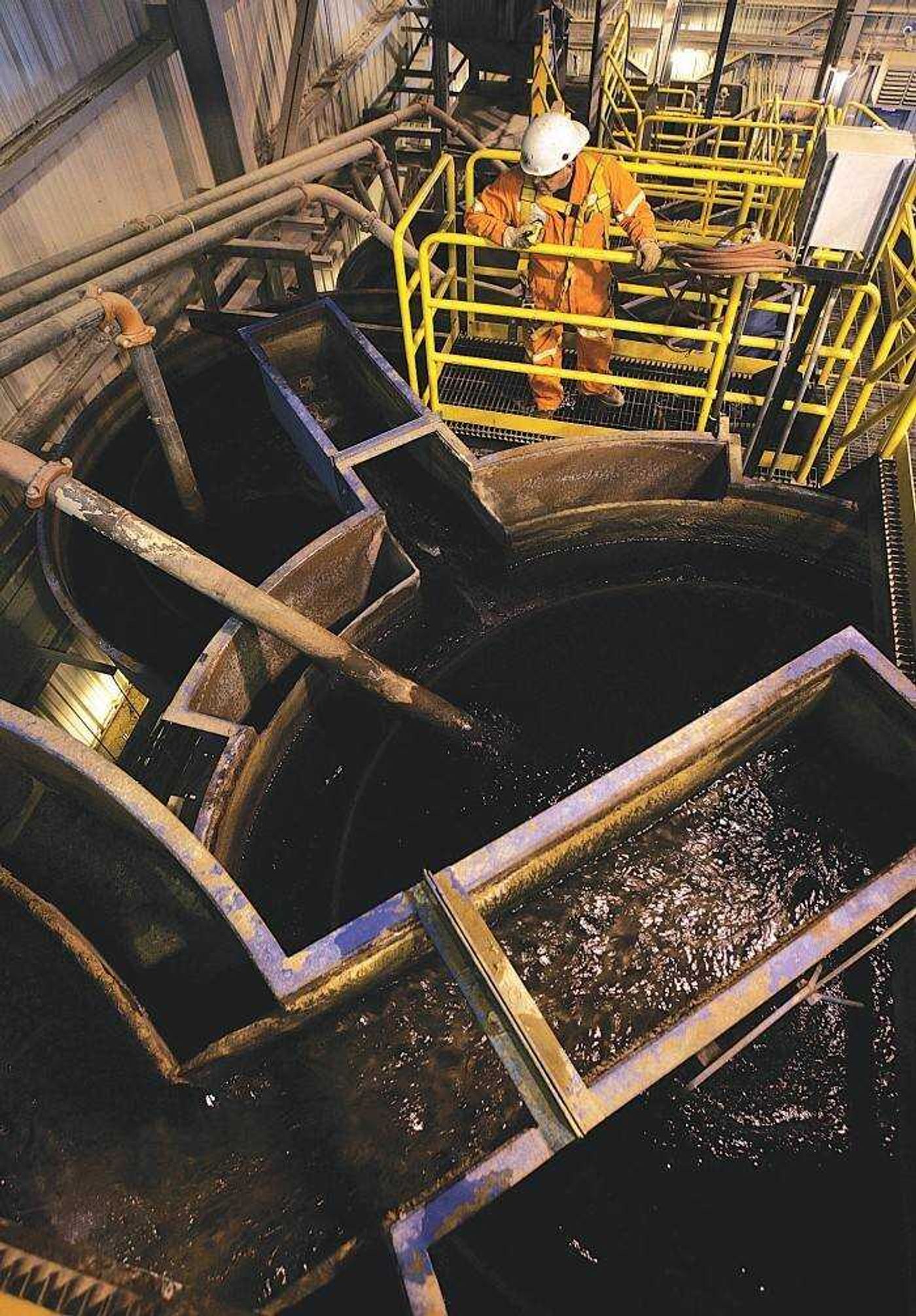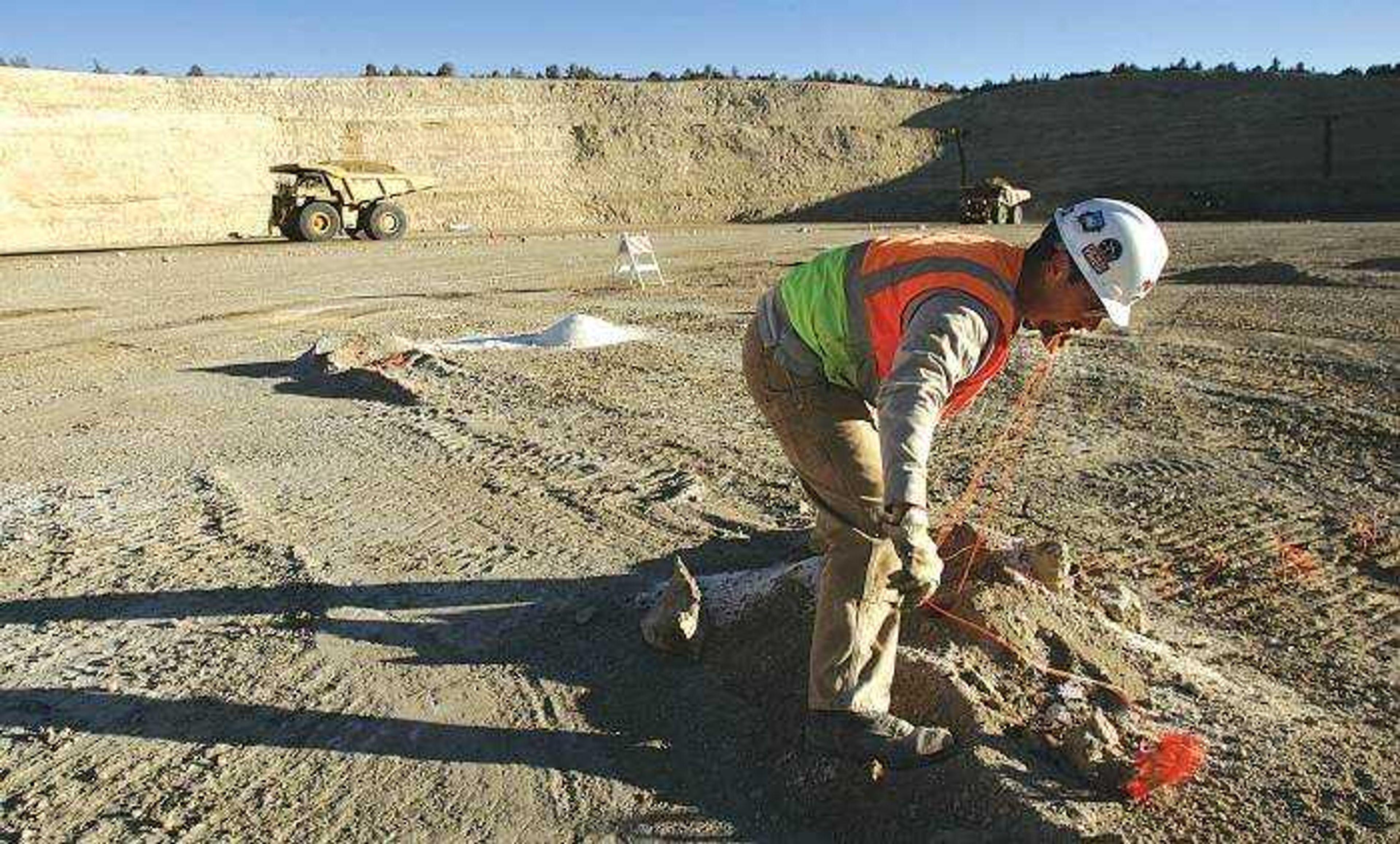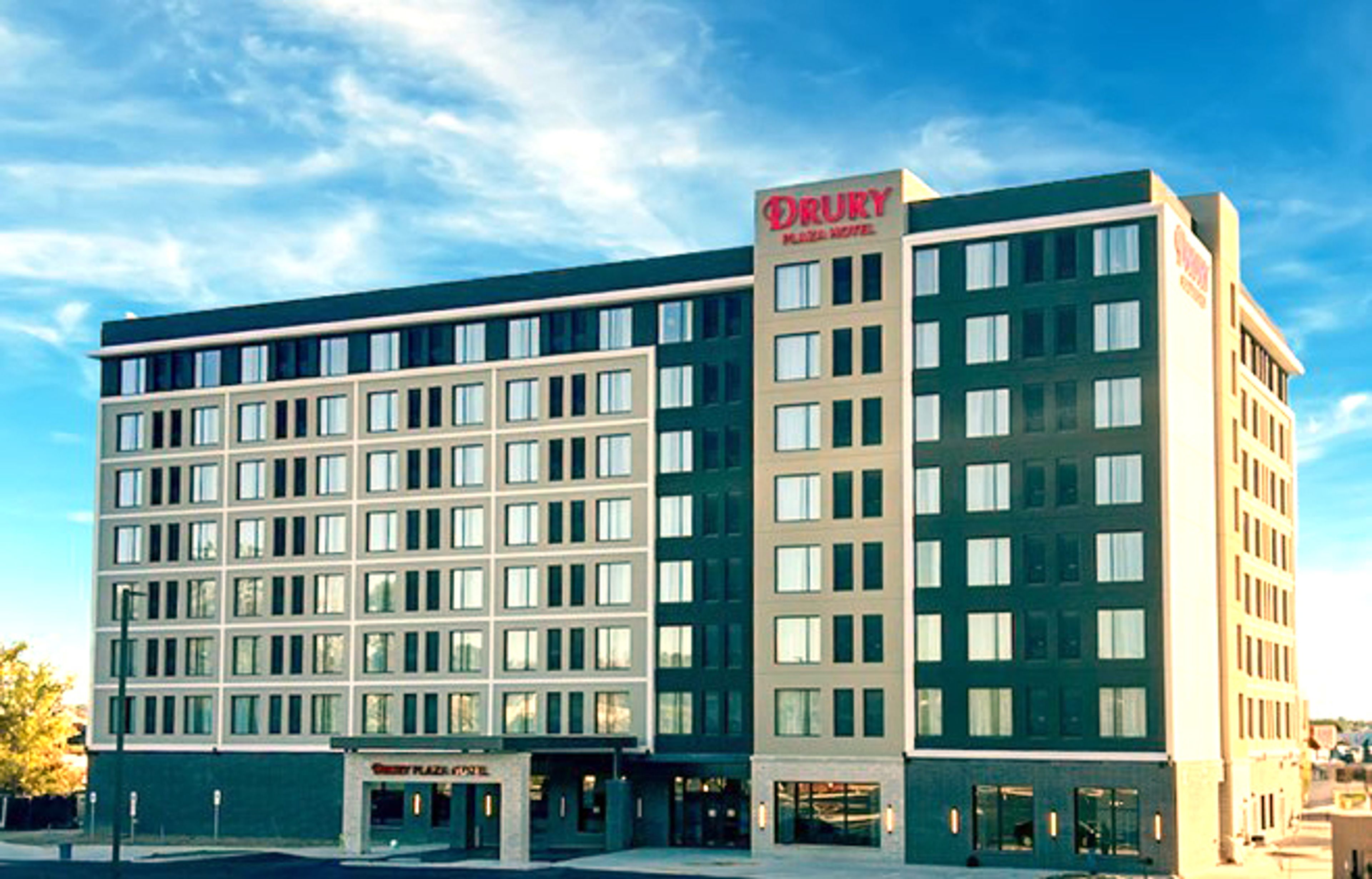For a few specks of the precious metal, life changes in isolated Nevada town
EUREKA, Nev. -- The gold at the Ruby Hill Mine is microscopic, specks of specks that amount to a few ounces in every 100 tons of rock carved from the earth. It is embedded hundreds of feet beneath the rocky floor of the high desert, tawny and stubbled with sagebrush, toothy ridges dusted with snow...
EUREKA, Nev. -- The gold at the Ruby Hill Mine is microscopic, specks of specks that amount to a few ounces in every 100 tons of rock carved from the earth. It is embedded hundreds of feet beneath the rocky floor of the high desert, tawny and stubbled with sagebrush, toothy ridges dusted with snow.
In staggered, 10-hour shifts, P.J. Whelchel removes buckets of blasted rock 40 tons at a time, making 100 passes an hour with his diesel-powered loader. He and the other miners will have to dig around the clock for about a year just to remove the 600-foot-deep layer of clay covering the gold.
"I've never seen a nugget myself," said Whelchel. "Maybe one of these days."
But it is unlikely that this 21st-century gold miner ever will.
The visible gold in North America, for the most part, has already been found. What remains are almost literally molecules of gold, buried deep in the Earth.

Now worth extracting
Whelchel would not be employed here, nor the mine still open, had the price of gold not recently climbed to a 20-year high. Now priced at about $710 per troy ounce, even microns of gold are worth the high cost of extraction.
Costly expeditions in Russia, Africa and South America are being funded in hopes of uncovering the next great deposit. And in Nevada -- if the state was a country, it would be the third largest gold-producing nation in the world -- small mines are being reopened or kept open.
A gold rush? Perhaps not. But after decades of depressed prices, it qualifies as a gold flurry, and the effects are clear in places like Eureka, isolated even by Nevada standards.
Because of gold, sales tax revenue in Eureka County has nearly doubled. Housing is filled to capacity. Property values are at an all-time high. The high school is getting an addition.
There are less obvious changes, too. Eateries are full during lunch, school enrollment is up and the school's eight-man football team went to the state championship last year.
"There's been more activity in this end of the county in last six to eight months than there's been in the last eight to 10 years," said Ron Carrion, owner of the Owl Club.
Perched at an elevation of 6,500 feet, Eureka is a hilly dot of a town, treeless except for man-high shrubs of cedar. The roads are little traveled, the people scattered widely.
About 700 people live in Eureka, about 2,000 in all of the county, a far cry from the 9,000 who lived in Eureka in the late 1800s when the town's lead and silver mines made it the state's second-largest city. It had a daily newspaper, fancy hotels, 100 saloons, dozens of gambling parlors, an opera house and several churches.
Eureka spent most of the last century shedding people and money, settling into a functional if not comfortable version of its original self. It became the county seat, a center of hay farming and ranching, a two-bit tourist stop thanks largely to its 19th-century architecture.
Bringing better times
But the gold mine has brought better times to Eureka.
Mining dollars are evident in the renovated courthouse and the generous school budget. The school recently subsidized a weekend ski trip to Utah for the students, charging them only $45 for the entire trip.
When jobs at the mine pay $16 to $22 an hour, the owner of the local diner, D.J.'s, can afford to pay high school students $7 an hour to cook and clean up. And those dollars end up in a new truck or all-terrain vehicle and ultimately gasoline.
Homemakers drive two hours to Elko to do their grocery shopping. They make a weekend out of a trip to the mall, driving five hours to Reno, spending the night before driving back home.
Gold prices, of course, are cyclical. There is evidence of earlier booms: a suburban style subdivision a mix of apartments, duplexes and houses, constructed atop a ridge in Eureka for mine employees 10 years ago, when the mine first opened. Nice restaurants opened then, too; both of which have since closed. A wealthy dentist from Elko, a much larger town two hours to the north, renovated a turn-of-the-century building, opening a hotel, restaurant and bar in the space. Only the hotel remains open.
"To live out here you have to be willing to work a lot of jobs," said Faye Morrison, the office manager at the mine for the past seven years. "I pumped gas, taught water aerobics. I worked on the farm until seven years ago. That's when I suddenly became allergic to everything."
The gold miner of 2006 doesn't look much like the prospector of American lore. Whelchel wears a T-shirt, jeans and white, leather lace-ups coated with the orange-brown dust that floats everywhere onto desktops and hat brims. He keeps smokes in his shirt pocket and, 20 feet above the ground, in the cab of his 200-ton, climate-controlled loader, he listens to basketball on a satellite radio as he works.
His wiry body has become accustomed to the violent ride, full of jerks and stops and lurches, driven by a joystick, lever and foot pedals.
The motion of digging, lifting, and dumping the load of dirt into a truck bed (it takes four loads to fill the truck) is a mechanized tango, which Whelchel can practically do blindfolded. His wife, Lisa, says he often does it in his sleep.
She quit her job in town tending bar to drive a truck at the mine. She now has benefits and makes twice as much as she used to.
Ruby Hill is unique among mines in Nevada in that it is small -- it employs about 100 people, compared to the thousands employed at larger mines.
When mining began at Ruby Hill in 1997, gold prices were falling. By the time the first deposit was exhausted, the price of gold was about $250 per ounce. Although managers knew a smaller deposit existed, extracting it was no longer cost-effective.
By 2002, the mine employed barely more than a dozen people, kept on to prepare the mine for closure. Davey Sandoval, a welder who was one of the dozen, said you could hear coyotes at night and the rattling of doors at the plant, the ghosts of old friends come to visit, he thought.
Sandoval, 53, has worked in mining almost all his life. He grew up in a large, ranching family in a small town called McGill, about 100 miles from Eureka. He learned to weld after high school, a skill that has kept him employed ever since. But like many miners, he is more than peripherally aware of oil prices, foreign exchange rates, stock market indices and signs of political unrest abroad, all of which can affect the price of gold.
He has lived in the same house in McGill for the last 25 years, the house where he and his late wife raised their two grown children. Even as his jobs changed, he stayed put. To work at Ruby Hill, he had to wake up at 3 a.m. to be at work by 5:30, carpooling with his brother and other men who worked at the mine. He learned to deal with long drives to jobs far from home that might disappear at any time.
"You don't get used to it," Sandoval said. "It's the way of life in the mining industry."
In 2002, just as the company was about to demolish the processing plant, gold prices began to rise. And the mine's managing engineers crunched the numbers to show that another dig would show a small profit for its owner, Barrick, the world's largest gold mining company.
Barrick will have spent about $75 million before a single ounce of gold is recovered from the new dig. The plant must be cleaned and refurbished. There will be a year of blasting, digging, hauling, dumping and grading before gold production begins.
Once and always a mining town, Eureka is comfortable with the environmental tradeoffs. Piles of black slag sit at each end of town, refuse from the 19th-century smelter but as much a monument as waste product.
Ruby Hill is an open-pit mine, a hole about a mile across, dug in terraces down to the water table. Waste dirt is methodically deposited nearby and smoothed into hills to be replanted with native species. The pit eventually will be abandoned, fenced off, but never filled.
A cyanide solution will be used to leach particles of gold from the crushed ore. Gold dissolves in cyanide while the remaining ore does not.
The gold is distilled from the cyanide solution, then poured into 75-pound buttons or bricks and shipped to a gold refinery in Massachusetts. At peak production, the mine will produce almost two buttons per week, worth about $1 million at today's prices.
The managers at Ruby Hill said they take great precautions to make sure no cyanide is ever released into the environment. Moreover, they said, the concentration of cyanide used does not constitute a grave hazard.
But there have been documented cases of cyanide from gold processing showing up in drinking water, said Alan Septoff, research director at Earthworks, an environmental watchdog group in Washington, D.C. He cited the Zortman-Landusky mine in Montana, where as a result the use of cyanide is now banned.
"Liners often and usually leak," Septoff said. "They might leak a little, they might leak a lot, but they leak. It's to be expected with a mass of material the size of several football fields... That said, the main impact of mining from an open pit is the leaching of acid and metals into the environment."
In addition, gold ore often contains hazardous metals like arsenic, mercury and cadmium as well as acid-producing sulfur. Unlike cyanide, they do not break down naturally.
The townspeople don't seem to be worried. They say they have a personal stake in a clean operation at Ruby Hill. The ground water below the mine is the water they drink from, the same water they use to grow their hay, which they will continue to grow long after the mine closes.
These are self-reliant people. Many hunt and butcher their own food, fix their own cars, build their own fences. A repairman has to be called from as far away as Salt Lake City, so people learn to tinker and improvise.
And so, when they are asked about the environmental cost of this mine, they answer pragmatically. The world needs metal, they think, and holes have to be dug.
"We have an impact on the world whether we want to think that or not," said engineer Matt Zietlow, the environmental manager at Ruby Hill. "If it's not grown, it has to be mined."
Connect with the Southeast Missourian Newsroom:
For corrections to this story or other insights for the editor, click here. To submit a letter to the editor, click here. To learn about the Southeast Missourian’s AI Policy, click here.







